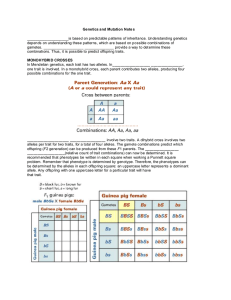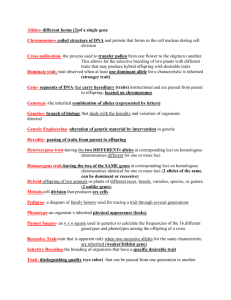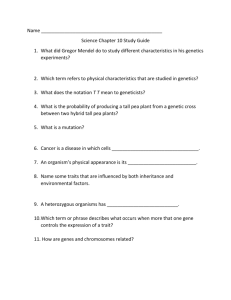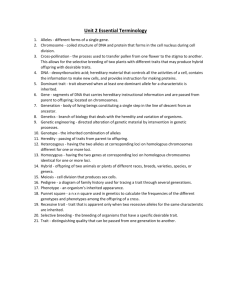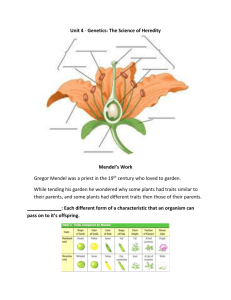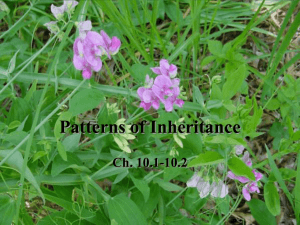D6 - Heredity and Mendelian Genetics - 3CBio
advertisement
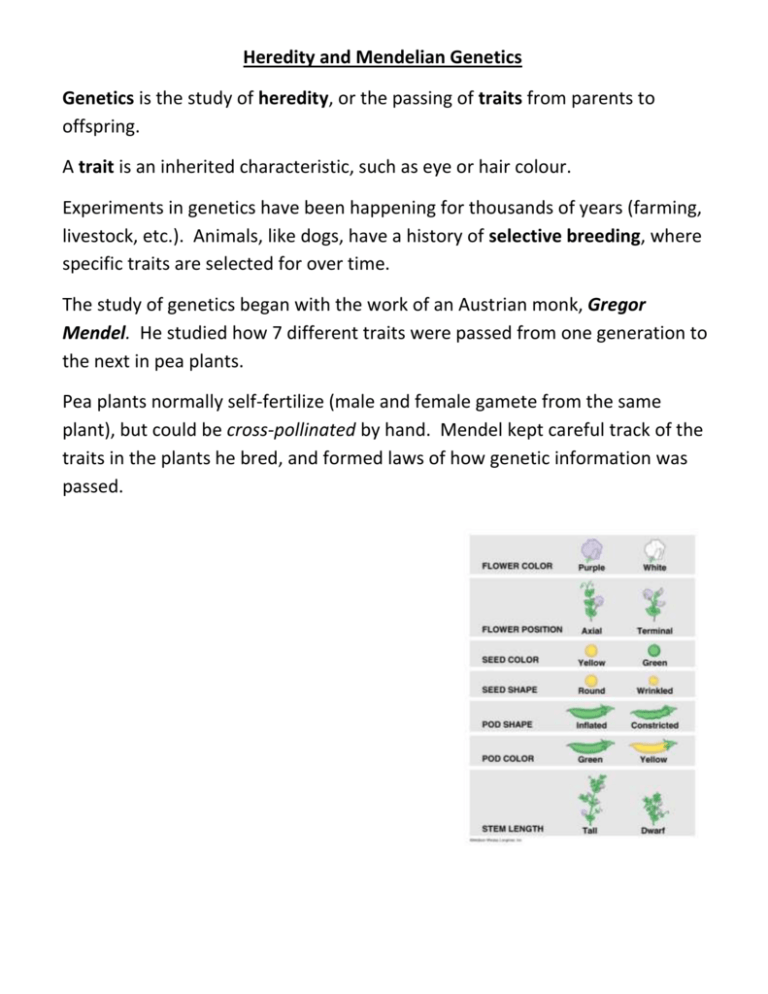
Heredity and Mendelian Genetics Genetics is the study of heredity, or the passing of traits from parents to offspring. A trait is an inherited characteristic, such as eye or hair colour. Experiments in genetics have been happening for thousands of years (farming, livestock, etc.). Animals, like dogs, have a history of selective breeding, where specific traits are selected for over time. The study of genetics began with the work of an Austrian monk, Gregor Mendel. He studied how 7 different traits were passed from one generation to the next in pea plants. Pea plants normally self-fertilize (male and female gamete from the same plant), but could be cross-pollinated by hand. Mendel kept careful track of the traits in the plants he bred, and formed laws of how genetic information was passed. Mendel got the same results for each trait he tested. One trait disappeared in the 1st generation and reappeared in the 2nd. To explain these results, Mendel proposed that: - each plant had 2 “factors” that act as sets of instructions for each characteristic - each parent donates one of these factors to the offspring - one factor or trait may dominate the other if it is present **We can link these ideas to what we now know about chromosomes, meiosis, and fertilization. Homologous chromosomes carry the genes for traits in the same relative positions. The different versions of the same gene are called alleles. Alleles can be dominant or recessive. The presence of the allele will determine if that characteristic is expressed. (Mendel’s Law of Dominance) Dominant – if at least 1 dominant allele is present, its characteristics will be visible. *Represented by an upper case letter. Recessive – characteristic will only be visible if both recessive alleles are present. *Represented by the corresponding lower case letter. Example: Trait: Flower colour Alleles: Purple – ___ white – __ Each parent/cell starts with 2 alleles for a trait. There are several possible combinations: allele combinations are called a genotype. appearance of the trait is its phenotype If the combinations have the SAME alleles, it is called homozygous. If the combinations have DIFFERENT alleles, it is called heterozygous. During meiosis, these alleles are separated into the gametes they can pass on. This is called the law of segregation. Example: Parent cell Gametes formed after meiosis: Genetic crosses (‘x’) involve deliberate breeding between a male and female. A monohybrid cross involves a difference in only 1 trait being studied. We can use a Punnett square to show and predict the inheritance of a trait in offspring (*see steps on page 137). The frequencies of each possible offspring combination are expressed as genotypic and phenotypic ratios ( #, a/b or % ).
